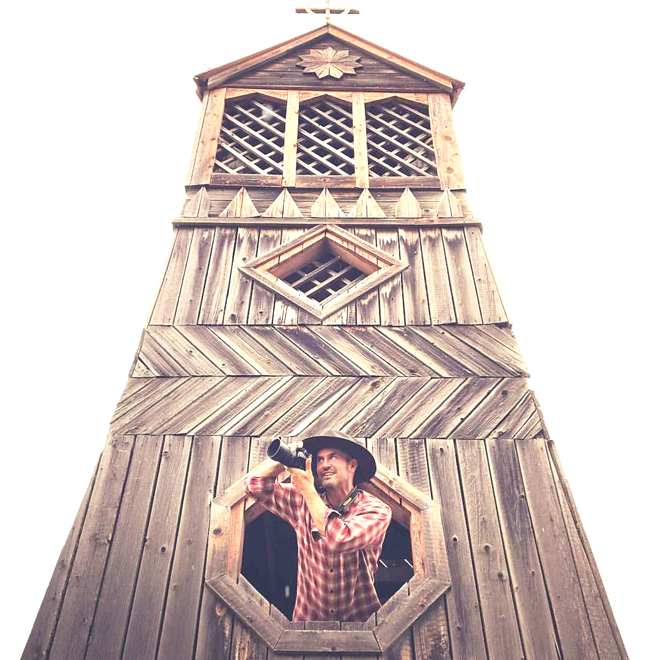By Tim Van Horn –
At age five, I had already taken my first photograph and decided I wanted to be a ‘cameraman.’ Growing up and travelling around Canada with my family in the Canadian Air Force, I developed a sense of duty to the people and fell in love with cultural experience in my ever-changing surroundings. Maybe it was my great, great, great uncle, William Cornelius Van Horne, president of the Canadian Pacific Railway, that gave me my entrepreneurial, think big spirit with a Canadian twist.
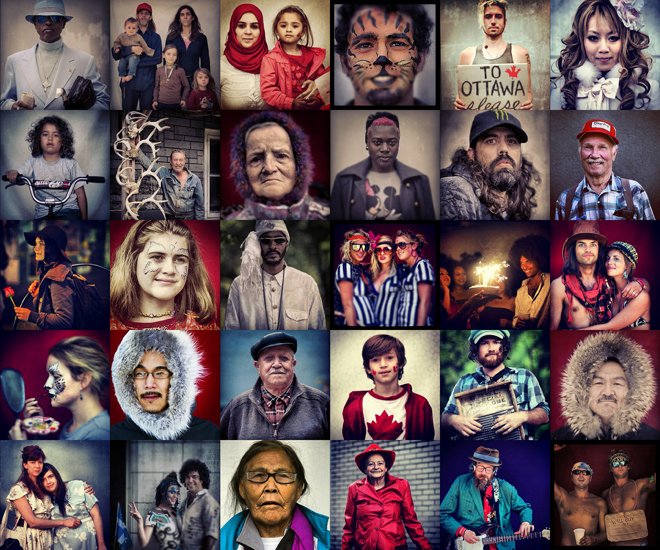
Many people dream of a road trip across Canada, but not many embark on this pilgrimage bound to the essence of citizenship. I waited 40 years before starting my journey across Canada from my home in Red Deer, Alberta. I began in a camperized, full-sized van and headed east into the heart of Canada. What started out as a well-intentioned one-year journey to capture a photographic ‘Day in the Life’ look at Canada, gave way to a decade-long, life-changing, creative tour-of-duty or quest to unite the authentic multifaceted face of Canada. Ten years, one wife, two dogs, three vans, and five trips across Canada later, I have compiled an incredible 60,000 photographic portraits from 1,300 Canadian communities. The Canadian Mosaic Project is the largest portrait of Canadians ever amassed in Canadian history.
From the time I set out in 2008, a new adventure beckoned around every bend in the road, and the weeks flowed into months, and months turned into years. I journeyed across the nation connecting with people of every age and nationality, respectfully challenging each person to believe in a complete stranger’s aspiration to unite the nation by having their photographic portrait taken. I was welcomed wholeheartedly into a menagerie of life scenarios. Standing on city street corners, in parks, at the front door of people’s homes, or in their places of work, I was overwhelmingly greeted with trust, support, and curiosity.
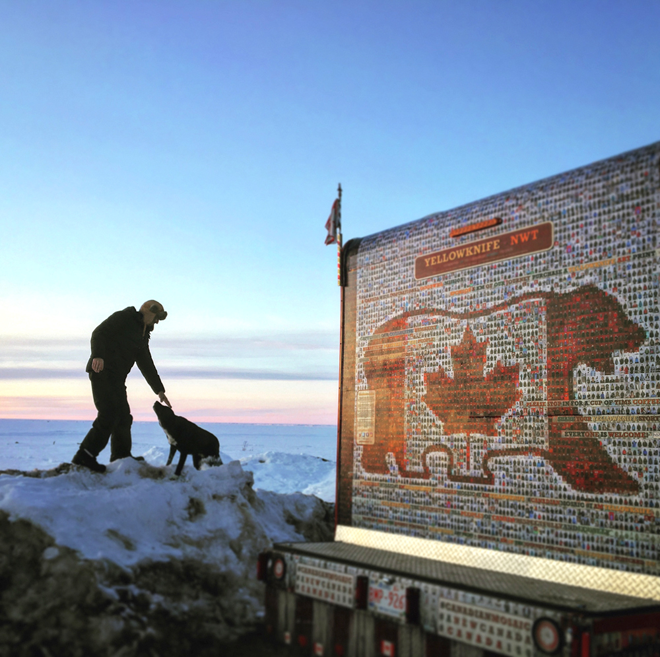
After nine years of travelling by van, documenting everyday Canadians in remote fishing villages, small prairie towns, and metropolitan centres, it was time to bring the Canadian Mosaic Project to the next level to create a product to share with Canadians. I sought collaborations and sponsorships for Canada’s 150th birthday in 2017 with the Canada Council for the Arts – Canada 150 grants, the Alberta Foundation for the Arts, and the Heritage Canada 150 Fund. My vision was to create a multimedia Canada bus—a mobile interactive pavilion on wheels steeped in innovative learning and inspiration.
A Heritage Canada 150 grants assistant I had met earlier in Ottawa in 2015 at a conference for the Community Fund for Canada’s 150 – Alliance 150 told me, “Apply! We will find money for you—we love your project!” Normally Heritage Canada funding was open to organizations or those with community partnerships, but 150 projects were open to everyone. My hesitant response was, “But…I’m just one guy with a dream to unite Canada. I don’t have a boardroom table or a team of people working with me.” Up to that point the Canadian Mosaic Project had been rolling along by donations or on my own dollar. I decided to apply.
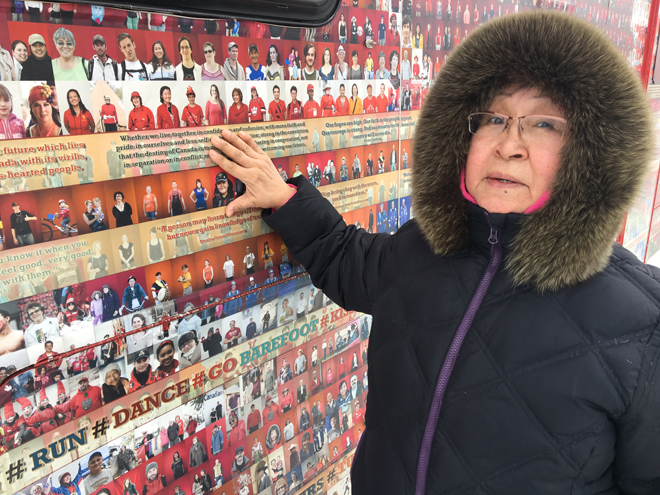
Believing I had something unique to offer both the public and the Canada 150 celebrations, I spent three months writing grant applications to the Canadian Council for the Arts – Canada 150 grants, the Alberta Foundation for the Arts, and the potentially large funding possibility through Heritage Canada that could bring my vision into reality. I submitted my proposal/concept for creating a 37-foot multimedia bus that would travel across Canada to 150 communities. The surface of the Canada bus would be adorned in a living mosaic including 60,000 portraits of people interwoven with educational text ribbons. Engaging audio stories would play while people viewed the mosaic, along with a photo book to flip through, and two goodwill ambassadors engaging with the public. The Canada bus would weave its way across the country stopping in a diverse cross-section of venues connecting with Canadians of all generations.
To my disappointment, all of the grant proposals were rejected. I vividly recall the moment I received the denial email from Heritage Canada 150. It was mid-October 2016 and I was out walking my dog in a field on the edge of town. I read the word “unfortunately” and my legs buckled beneath me. I collapsed motionlessly into the tall grass and laid there staring blankly into the passing puffy clouds. It was a turning point. I was self-funded and living on donations and had worked independently for nine years creating and crafting a monolithic portrait to share during Canada’s 150th celebrations and without securing any of the grants, namely that of Heritage Canada 150, (accounting for 50 percent of my budget), it wasn’t likely I would be able to engage any other government agencies or potential sponsors. The idea of the Canada bus literally slammed into a concrete roadblock.
The Heritage Canada agent I spoke to about my failed application, told me my project was clearly a Canada 150 project, but lacked any public engagement.
I was floored. There were multiple ways to engage with the Canada bus: Studying the 60,000 faces from 1,300 Canadian communities. Educational text interweaving with the portraits wrapping around the bus. A Canada guest book for handwritten thoughts about Canada for the rest of Canada to read. A ‘To Canada with Love’ photographic book to view the project. Two goodwill ambassadors engaging the public with entertainment and stories. Free, on the spot photo shoots. Audio interviews. Stories about Canada and media coverage documenting Canada in its 150th year.
Later, after a long period of reflection, it came to me that the Canadian Mosaic Project was never intended to be associated with the government or any single source. The storyline could have read ‘The Canadian Mosaic Project is about the people, for the people, and powered by the people.”
I pose this question: what do you remember visually that represented Canada for the 150th year? Take, for example, the Canada 150 flag, which was perplexing as to the colour scheme and ambiguous, futuristic design, and later unceremoniously filled discount bins at local Canadian Tire stores, destined for the landfill. The government did fund a six-storey-tall, 13,600-kilogram yellow duck and inflated it on Toronto’s harbor front. I’m not sure of the public engagement aspect of this, considering the price tag of $200,000. And who could forget the $8.5 million hockey rink on parliament hill for two months, to the tune of $141,666 per day.
The reality is, the Canadian Mosaic Project continues to grow one person at a time and remains the largest, most contemporary portrait of the Canadian people ever collected.
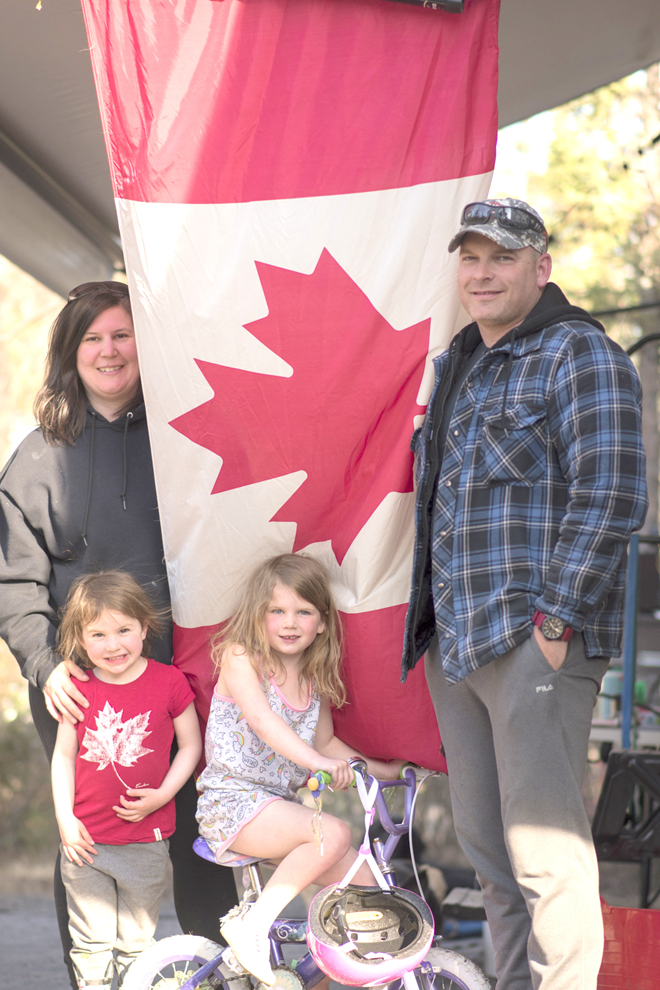
In these ever-changing times, I believe we need a visual representation inclusive of all groups and ethnicities, and one that speaks volumes about Canada’s one-of-a-kind cultural identity, while broadly defining our collective humanity. Canada needs continuous dialogue to keep Canadian values healthy, strong, and free, and to weather any possible fracturing in our foundation from outside forces. We also need a tribute to the hard-working people of Canada, and to welcome new comers and connect with the traditions of old school Canadians. Essentially, we need to keep Canada… Canada, strong and free for you and me!
Despite everything, I can say that having a camera and a solid, honourable purpose behind the camera lens has allowed me to transform, flow, and be taken in many directions. I see this as a gift and my calling.
As for my dream of touring in a multimedia bus educating and inspiring Canadians, no, it did not happen for Canada’s 150th, but it will. I am stronger from the experience, with many lessons learned in the 10 years since I started the Canadian Mosaic Project. I am forging ahead and have picked up where I left off over a year ago.
This year, I’ll be living in one place long enough to make money to make it to my next destination. Each stop I will be shooting portraits, writing stories, conducting video/audio interviews, and dissecting/deciphering the public’s sentiment, all of which will be condensed, refined, and formatted into a contemporary mobile travelling pavilion on wheels that will tour the nation stopping in communities across Canada starting in 2021.
Stay tuned as I report to you from the open road in the most beautiful of gypsy caravans with tales of our one-of-a-kind Canadian identity and awesome country we share and call Canada! To follow my journey, visit Canadian Mosaic on facebook or canadianmosaic.ca.
